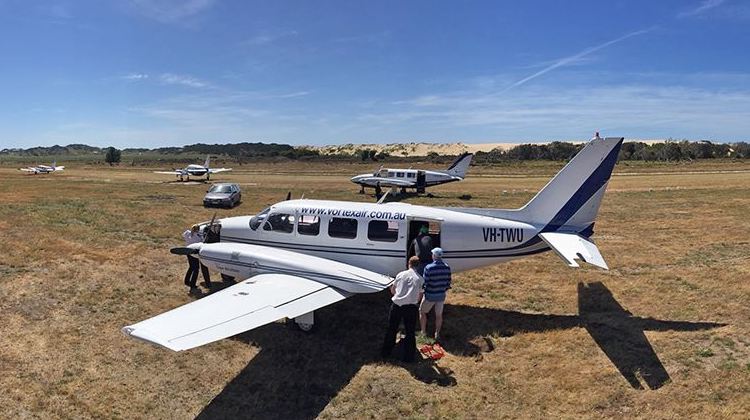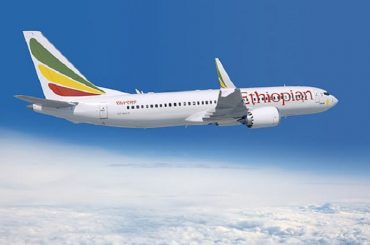
The Australian Transport Safety Bureau (ATSB) has released its final report into a pilot who overshot his intended destination by 78km after falling asleep at the controls.
The incident occurred on November 8 2018 on board a Vortex Air Piper PA-31 aircraft flying from Devonport to King Island in Tasmania.
The ATSB final report, published on Monday, said the pilot operating the freight flight had not slept for 24 hours before his shift.
The pilot, the only person on board the Piper PA-31 Navajo Chieftain VH-TWU at the time of the early morning flight, had the plane on autopilot at an altitude of 6000ft and was listening to music and monitoring the flight when he dozed off. He woke up to the northwest of King Island after air traffic controllers and pilots in the vicinity had been calling him for eight minutes. After reporting that operations were normal, he returned to the island.
The final report said that after waking and returning to the island’s airport, he took off again to his air charter company’s base at Moorabbin Airport in Melbourne while he was “acutely fatigued to a level affecting performance”.
“This investigation highlights the need for pilots to assess their level of fatigue before and during their flight,” ATSB executive director for transport safety Nat Nagy said in a statement.
“Before commencing night operations pilots are encouraged to modify their usual sleep routines to ensure they are adequately rested.”
The pilot had taken off from Moorabbin Airport in Victoria at 2300 on November 7 2018, landing at Tasmania’s Devonport Airport shortly after midnight.
The final report said that during a three-hour break between 0200 and 0500, the pilot had the opportunity to sleep at the terminal’s rest facility. However, he was unable to sleep.
Further, it was his first shift after five days on leave and he said he did not modify his normal sleep patterns prior to starting night shifts, the report said.
The pilot set off for King Island at 0620 and by 0733, when air traffic control and other pilots had been trying to contact him after he overflew the island, he had been awake for 24 hours.
Though the ATSB said he was acutely fatigued, the pilot telephoned his supervisor and Melbourne’s air traffic control centre from King Island before completing his shift back to Moorabbin without taking a break.
“Analysis confirmed the pilot’s fatigue was at a level known to affect performance, while further analysis showed that even if the pilot had been able to sleep during his rest period he still would have been fatigued to a level known to affect performance,” the ATSB final report said.
The ATSB suggested in its report that operators considered the risks of allowing a pilot to continue operating directly after a fatigue-related incident without corrective management.
Further, it said that despite knowing the circumstances of the incident, the operator did not put in place measures to ensure the pilot was fit to continue the shift.
“The operator did not have a consistent roster pattern across weeks, and rosters were provided at relatively short notice and subject to change. As a result, it could be difficult to predict future shifts and effectively plan sleep in advance for preparation for night shift work,” the report said.
“While this was not a factor in this occurrence due to the pilot knowing about the night shift in advance, it is important that rosters are maintained in a way that provide pilots the best opportunity to plan and obtain sleep to avoid flying while fatigued,” the ATSB said.

Nagy said it was the pilot’s responsibility to use rest periods to get adequate sleep and to remove themselves from duty if they felt fatigued. At the same time, it was also “incumbent on operators to implement policies and create an organisational culture where flight crew can report fatigue and remove themselves from duty in a supportive environment”.
The ATSB recently released a research report “Fatigue experiences and culture in Australian commercial air transport pilots” to provide the industry, regulators and policymakers with insights into industry perceptions of fatigue.
Australia’s Civil Aviation Safety Authority (CASA) said at the time of the incident that it was also reviewing the fatigue management procedures used by Vortex Air to ensure its procedures met all safety requirements, including adequate rest and sleep time for pilots.
It has also been doing an independent review on fatigue risk management by operators and their pilots so that it does not result in a safety risk.
The final report into the Piper PA-31 incident can be found on the ATSB website.
VIDEO: ATSB executive director for transport safety Nat Nagy talks about the November 8 2018 incident in a video published on the bureau’s Vimeo channel.












